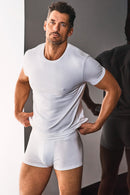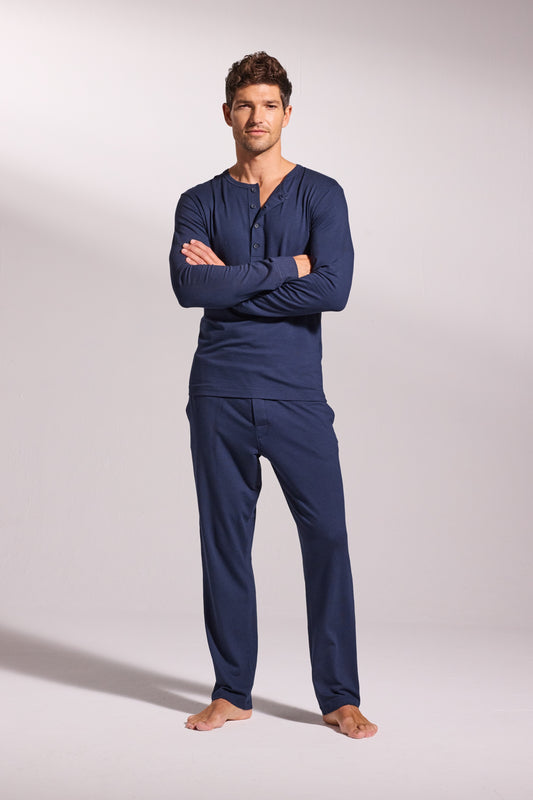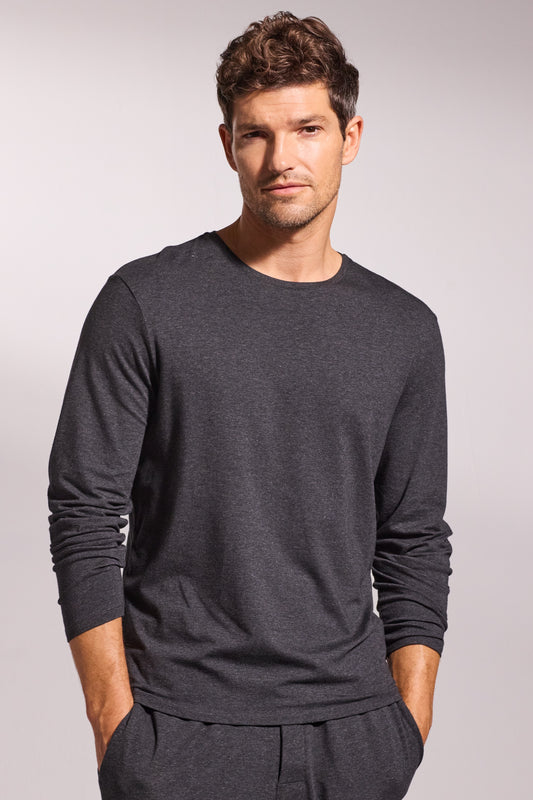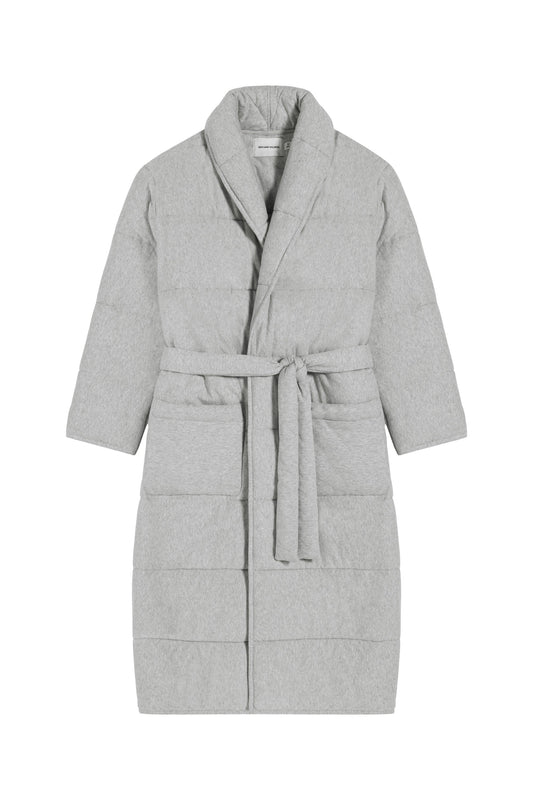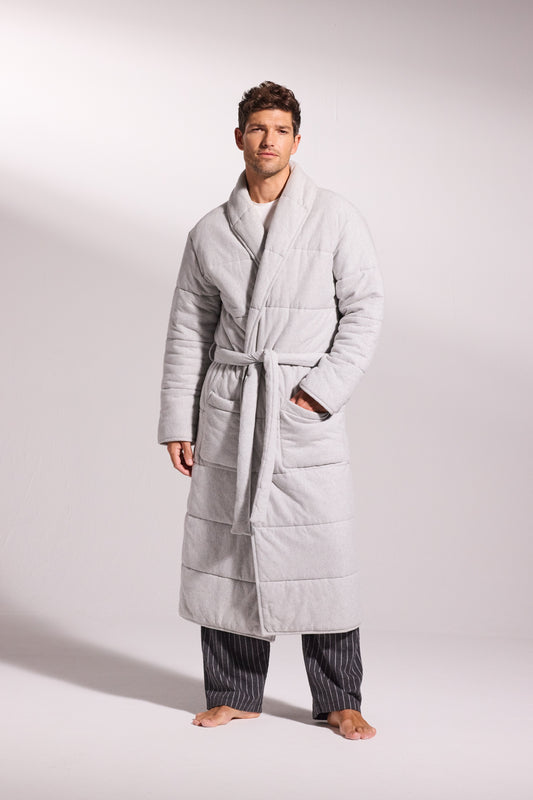A good night’s shut-eye is essential for good health; here are some ideas about how to ensure The Sandman visits every night
Amid news of global shortages, it seems there is yet another commodity that is in increasingly limited supply: sleep. We just aren’t getting enough of it. Matt Walker, professor of neuroscience and psychology at the University of California, Berkeley, says: ‘Back in the 1940s, people were sleeping on average over eight hours a night, and now, in the modern age, we’re down to around 6.7, 6.8 hours a night. So, in just 70 years, we have lopped off 20 per cent [of sleep time].’
It is commonly quoted that a 75-year-old will have spent 25 of their years (or 9,125 days) kipping. It seems many of us are now falling well short of that. In a Sunday Times survey of the sleeping habits of 1,162 women, more than half rated their sleep quality as “bad” or “very bad”. University College London provides advice to its students on how to get a restful night because (according to Neuropsychiatric Disease and Treatment journal) it is estimated that up to 60% of students have trouble sleeping and around 7% can be classified as insomniacs.
And sleep deprivation is not good for you. Brake, the UK road safety charity, suggests that globally between 10% and 20% of all vehicle accidents are caused by fatigue, especially around the hours of 6-7 am. America’s National Highway Traffic Safety Administration (NHTSA) claims that drowsy driving causes 10 times more car accidents than drunk driving.
And it’s not just drivers at risk. Experiments in the early 1960s (by William Dement of New York University) where subjects were denied REM sleep (the stage where you make rapid eye movements, dream and, it is believed, consolidate emotional memories) resulted in anxiety and irritability. Long-term denial of REM – common in severe alcoholics – can also lead to psychosis and delirium. Lack of sleep can also have longer-term health implications. According to the journal Circulation, insomniacs are at high risk of developing hypertension, atherosclerosis, and acute myocardial infarction, as well as being more prone to depression and suicidal thoughts.
Worrying about getting enough sleep (ironically, itself a source of insomnia) is nothing new. In his book Wild Nights, Benjamin Reiss lists historic cures for sleeplessness, including crisp lettuce leaves, nutmeg, dandelion and onions. The last were presumably recommended for those who slept alone. So, what practical steps can the modern sleep-deprived person take to make certain you summon The Sandman every night? Here are our seven steps to sleep heaven.
1. No-brainer
Probably the most well-known approach to improving your night’s slumber is to lay off the stimulants that increase your metabolism and wakefulness. Caffeine, for example, interferes with your diurnal rhythms by blocking the “sleep” receptors in the brain which usually signal it is bedtime. A research paper in The Journal of Clinical Sleep Medicine showed that a 400mg dose of caffeine (three or four cups of regular coffee but only one “reserve nitro cold brew” from Starbucks) taken six hours before bedtime was a significant disrupter of sleep. So, the authors concluded, no cup of Joe for at least six hours before bed, possibly more (people do vary in their response to caffeine). Tea is less egregious at around 25-50mg of caffeine, depending on if it is black or green (average coffee – 60-100mg), and caffeine-free herbal teas can be an aid to pre-bed relaxation.
But alcohol close to lights-out is a no-no (maybe skip the nightcap) as it messes with the “architecture” of sleep – it has an early sedative effect, but it disrupts the REM stage, suppressing dreaming, and then leads to fitful wakefulness (known as WASO – wake after sleep onset), which fragments our rest and leaves us feeling… well, you know. And nicotine? Also a stimulant that plays havoc with your neurotransmitters. Just say no.
What about a hot chocolate, a popular bedtime drink? Most chocolate milk drinks only contain about 2mg caffeine per serving, although dark cocoa powder can jack that up to 25mg, but that’s still well short of a double espresso.
2. Feeling blue
Those screens we are glued to all day and deep into the evening – phones, computers, TVs, handheld games consoles and tablets – all emit daylight-like blue wavelengths that can confuse our sleep systems, including blocking the release of melatonin, the hormone which helps us nod off. In one study, Charles Czeisler of Harvard’s Division of Sleep Medicine asked people to read either a printed book or a blue-light-emitting e-book about four hours before bed, for five evenings in a row. Those who read the e-books released less melatonin and were less sleepy than those who’d read a regular book. Their melatonin release was delayed by more than an hour and a half and so their circadian clocks were time-shifted leading to increased sleep latency – the gap between going to bed and falling asleep. Stick to words on paper (or audio, such as Matthew McConaughey’s highly successful Calm app, or a book on Audible) in bed and avoid any LED screens for at least 30 minutes before you turn in.
3. What, me worry?
In his book Why We Sleep, neuroscientist professor Matthew Walker writes that insomnia is typically triggered by worry and anxiety, which raise your cortisol (the main stress hormone released by the adrenal glands on top of your kidneys) and noradrenaline (the nervous system fight-or-flight trigger) levels. Given the current economic and political turmoil in this world, it is little surprise that stress is a major factor in sleeplessness.
So, consider using strategies to “empty” your mind before bed. Yoga and meditation are two popular options. Studies from India reported in various sleep journals have demonstrated that both transcendental meditation and vipassana meditation help the transition to slow wave sleep, also known as deep sleep, and quality sleep.
Another tactic is to use a pen and paper. An investigation in the Journal of Experimental Psychology looked at the effect of subjects writing a “to-do” list five minutes before bedtime. It concluded that: ‘[List writing] will correlate with decreased sleep onset latency: The more to-do list items that [the subject] writes, the faster they will fall asleep.’ Keep the pen and paper next to the bed – writing down your problems also works as a strategy in the middle of the night.
4. Like clockwork
The human body loves routine. Mentally you might want to be a wild, spontaneous person to whom dull routine is an anathema. Physically, your internal systems, including the ones governing your body clock, crave predictability. So, according to the NHS insomnia website, you should go to sleep at the same time each night and wake up at the same time every morning. Yes, that includes weekends – lie-ins (and indeed long daytime naps, especially after 3pm) disrupt your circadian rhythms.
Mealtimes are also a factor – try to eat at the same time each day, with the timing of dinner a key element. According to a recent report in the British Journal of Nutrition: ‘Eating or drinking further from bedtime lowers the odds of short… sleep duration and WASO.’ An Australian study in The International Journal of Psychophysiology confirmed that spicy foods before bedtime are the worst culprit – not only causing indigestion but raising body temperature, which is associated with poor sleep quality. So, about that late night kebab on the way home…
5. Exercise… and try CBD
According to his Life in a Day feature in The Sunday Times, our founder, David Gandy, takes a five-mile walk with his dog in Richmond Park every day. This is good practice. The Johns Hopkins Centre for Sleep and Wellness website says: “Moderate aerobic exercise increases the amount of slow wave sleep you get.” The biological reasons aren’t fully understood, but generally outdoor exercise (be it walking, cycling or swimming) seems to be more effective as a sleep booster than a session at a subterranean gym. No doubt it’s those circadian rhythms/melatonin at work again. The timing of your activity is important. Any exercise releases stimulating endorphins and raises your core temperature, both of which are anti-sleep factors, which is why the NHS advice is to avoid aerobic exercise for at least four hours before turning in. David knows this, but still trains in the evenings. Which doesn’t help his struggles with poor sleep.
‘I’ve never been able to sleep particularly well,’ he admits. ‘My career in modelling means constant jet lag and pretty inconsistent working hours; neither of which are very conducive to good sleep patterns. This was never an issue before I had children, in fact I saw it as a positive that I was used to being up in the middle of the night and could survive on not many hours sleep – I’ve always enjoyed having a busy, high-octane life. I train at the gym in the evenings which is great for my mental well-being and health, but it’s more of a stimulant, meaning I’m not relaxed or tired before bed.’
But thankfully, he has found something that works for him. ‘Since having my daughters (and subsequently even less sleep!), combined with the workload of Wellwear and my modelling career, I’ve been trying to find a remedy to help, and recently discovered Naturecan CBD oil, which has been a game changer. Rather than a million things running around in my head that keep me awake for hours, I fall asleep quickly and wake up feeling great. I was worried it would make me spaced or sluggish, but this is a common misconception around CBD and not the case at all. I have also found it helps with aches and stiffness (partly from getting older but mostly due to training), and particularly back pain which I have had for many years.’
6. Type cast
You can’t cheat your genes. A good percentage of our preferred sleep patterns are down to our physiological pre-sets, which determine your “chronotype”. Simply put, many of us are either larks, who likes an early night and early rise, or owls, who prefer to wait until the early hours (with a 2am bedtime, David Gandy is definitely an owl), and some are in-betweeners. Of course, it does change throughout our lives – the same toddler who is a lark will change to an owl as a teenager (all those lie-ins) before settling down as an adult, then shifting towards larkdom again as they age. Sex matters, too. Helen Driver, who leads a female-focused sleep lab at Queen’s University in Canada, has said: ‘Women typically need 15 to 20 minutes more sleep than men. We go to bed a little earlier – women are more larks than owls – and we have a higher recovery time after poor sleep than men.’
So don’t try to force yourself to match your partner’s chronotype, whatever sex they might be, or fight your own predilection for early or late nights. Listen to your body – it knows best. And be understanding of those who stay up to watch box sets into the wee small hours. They might not be able to help it.
7. Make room
It’s known by the rather clumsy term “sleep hygiene” – how you set up your bedroom environment for maximum snoozability. Some tips are obvious – have a mattress and pillows that you get on with; the room should be quiet and dark to make sure your biorhythms aren’t scrambled, and the ambient temperature should be around 18⁰C. Neuroscientist Matthew Walker again: ‘When the sun sets, temperature drops dramatically and when the sun rises it starts to pick back up. Our bodies expect that beautiful thermal lull. The drop tells us it’s time to sleep and actually helps us to [nod off].’ So, in summary, stay cool.
Rituals are also an important part of sleep hygiene. A shower or bath (not too hot) can act as a trigger to tell the body that it’s about that time of day, as can opening a book, having a glass of warm milk (the amino acid tryptophan helps make you drowsy), sipping herbal tea or taking off the daywear and slipping into pyjamas. ‘PJs can totally be part of the winding down routine,’ says Dr Alex Dimitriu of Menlo Park Psychiatry and Sleep Medicine in California. ‘[They] can certainly serve as a reminder for upcoming bedtime, much like taking off your work clothes at the end of the day.’
They are also more hygienic than sleeping naked – we shed around 30-40,000 skin cells an hour and produce up to a litre of sweat every sleep cycle, so it makes sense to wear something between you and your sheets. Try David Gandy Wellwear's Premium Pyjama Pant or Shorts, which can be paired with the Premium Pyjama Tee. Designed for maximum comfort, these are made from the best natural fibres (Pima cotton and highly absorbent, eco-friendly modal, spun from beech trees), which have been chosen for their softness.
Wellwear uses fabric technology to improve the wearer’s wellbeing across its range. For the pyjamas, aloe vera plant extract gives the material wound-healing, anti-inflammatory and moisturising properties. David Gandy’s PJs might not be a magic insomnia solution on their own, but coupled with some of the strategies above, you are more likely to have a decent night’s sleep in them. And when you wake up, you’ll look – and feel – a lot more stylish than you might otherwise.
Our tips always add up to seven for the simple reason that it’s David’s lucky number
